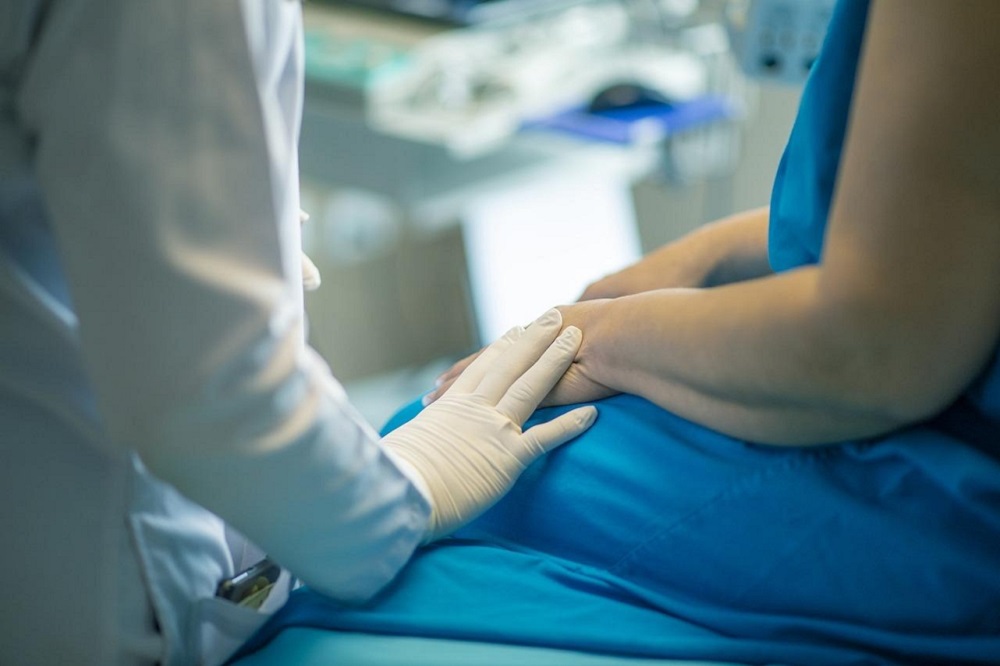Women in Wales who are overweight may be at double the risk of developing womb cancer

Women in Wales who are overweight or obese may be at double the risk of developing womb cancer according to new research.
Cancer of the uterus or womb, also known as endometrial cancer, is the UK’s 4th most common cancer in women, accounting for 5% of all new cancer cases between 2016 and 2018, and according to Cancer UK uterine cancer incidence rates in Wales are significantly higher than the UK average.
Existing research has established that being overweight or obese is the second-highest preventable cause of cancer in the UK, with more than one in 20 cases estimated to be as a result of this.
Now a new Cancer Research UK-funded study found that for every five extra body mass index (BMI) units – the equivalent of a 5ft 5in tall adult woman being two stones heavier – the risk increased by 88%.
Researchers analysed genetic samples from some 120,000 women from Australia, Belgium, Germany, Poland, Sweden, the UK and the USA, of which around 13,000 had endometrial cancer.
Looking at markers of 14 traits that could link obesity and womb cancer, they found two hormones – fasting insulin and testosterone – which increased the likelihood of being diagnosed with the condition.
By identifying precisely how hormones could increase the risk, scientists could in future use drugs to regulate levels of those hormones in people who are already in greater danger of developing the cancer.
The peer-reviewed study from the University of Bristol, which was published in BMC Medicine, is one of the first of its kind to look at the effect of lifelong higher BMI on womb cancer risk rather than a snapshot in time.
The paper’s lead author, Emma Hazelwood, said: “This study is an interesting first step into how genetic analyses could be used to uncover exactly how obesity causes cancer, and what can be done to tackle it.
“Links between obesity and womb cancer are well-known but this is one of the largest studies which has looked into exactly why that is on a molecular level.”
Serious implications
The new research examining the link between obesity and cancer of the womb could have serious implications for women in Wales, based on the prevalence of deprivation factors and the underlying causes of becoming overweight or obese.
According to the adult lifestyle data from the National Survey for Wales for 2019-20 around 55% of women in Wales were ‘overweight or obese’ and around half of those classed as obese. A BMI of 18 to 25 is considered a healthy weight, 25 to 30 is overweight, and over 30 is obese.
Findings of a report by NHS Wales into the link between deprivation and obesity show that those from the most disadvantaged communities experience much higher levels of obesity due to underlying determinants such as access to a healthy diet, opportunities to be active and the promotion and availability of cheap, high energy food products. The percentage of adults who are a healthy weight in Wales decreases as deprivation increases.
In Wales deprivation is measured by a number of elements to form the Welsh Index of Multiple Deprivation (WIMD) which are income, housing, employment, access to services, education, health, community safety and physical environment.
A study published by BMJ Open in 2016, which compares deprivation rates across the UK nations found that “Wales was considerably more deprived than either Scotland or England. Just 7% of the Welsh population were in one of the least deprived fifth of areas across the UK, although the proportion of people in the most deprived quintile was only marginally higher than for England or Scotland.”
Dr Julie Sharp, head of health information at Cancer Research UK said: “Studies like this bolster the fact that being overweight or obese is the second biggest cause of cancer in the UK and can help us start to pinpoint why.
“This will play a pivotal role in uncovering how to prevent and treat cancer in the future”.
| Uterine Cancer (C54-C55): 2016-2018 | ||||||
| Average Number of New Cases Per Year, Crude and European Age-Standardised (AS) Incidence Rates per 100,000 Population, UK | ||||||
| England | Scotland | Wales | NI | UK | ||
| Female | Cases | 8,051 | 846 | 544 | 263 | 9,703 |
| Crude Rate | 28.6 | 30.4 | 34.3 | 27.6 | 29.0 | |
| AS Rate | 29.5 | 29.6 | 32.2 | 30.2 | 29.7 | |
| AS Rate – 95% LCL | 29.2 | 28.4 | 30.7 | 28.1 | 29.4 | |
| AS Rate – 95% UCL | 29.9 | 30.8 | 33.8 | 32.3 | 30.0 | |
| 95% LCL and 95% UCL are the 95% lower and upper confidence limits around the AS Rate | ||||||
| Source: cruk.org/cancerstats | ||||||
Support our Nation today
For the price of a cup of coffee a month you can help us create an independent, not-for-profit, national news service for the people of Wales, by the people of Wales.




